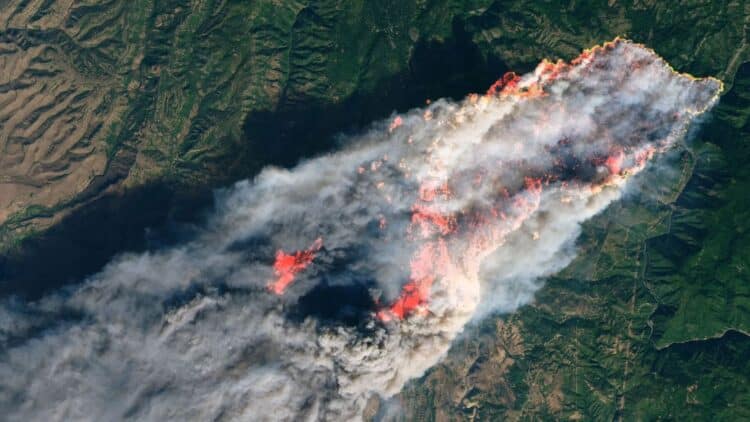Global warming may no longer come as a surprise to anyone, especially NASA. After all, it is a topic that is always discussed in newspapers, at schools, colleges, and even in conversations with friends and family. But even so, no one is prepared for its consequences. Or are you going to tell me that a country becoming uninhabitable is something we are already expecting? That is what awaits us.
The race against time: Why is NASA so worried about this country?
Five years ago, in 2020, the journal Science Advances published a study that identified regions of the planet that are on track to become uninhabitable by 2070 due to extreme heat.
The study analyzed extreme heat events between 1979 and 2017, in which high air humidity and temperatures above 35ºC prevent sweat from cooling the body, which already represents a risk of death for the population. In addition to the worrying situation, what also draws scientists’ attention is that these extreme events have tripled during the 40 years of study.
Even though this first edition of the study did not identify or mention Brazil as one of the regions analyzed, in March 2022, a NASA blog cited the study in the journal, and in that publication, the country was mentioned as one of the regions most affected by the deadly heat.
Climatologist Carlos Nobre comments on the subject and makes some important statements to pay attention to:
“And it’s not just Brazil, okay? It’s a huge part of the tropical regions and even mid-latitudes that could become uninhabitable if the temperature reaches this level of 4ºC or more”.
The 4°C increase mentioned by Nobre refers to a temperature above the average of pre-industrial levels. And, if this increase was previously projected to occur in 100/200 years, the situation becomes even more alarming after a new projection from The Nature Conservancy’s (TNC) Natural Climate Solutions, which states that 4°C could now be reached in 30 or 50 years.
The Amazon is also heating up – and could collapse
If we talk about Brazil, we can’t help but talk about the Amazon, and unfortunately, this time it’s to report some not-so-good news. A NASA study projected that the world could reach a 2°C increase in average temperature between 2041 and 2044, and as a consequence, not only will the current climate stability be affected, but the Amazon region will be the most affected.
Some of the consequences that Amazon will face if this increase becomes a reality are:
- Less rainfall, more droughts, strong winds, and increased risk of fires;
- Loss of moisture, especially in the Arc of Deforestation;
- Threats to species that do not thrive in periods of drought and wind.
- Risk of the forest turning into degraded Savannah, which would release 250 billion tons of CO₂, representing almost 75% of the global target to limit warming to 1.5°C.
It won’t just be forests affected by extreme heat: cities will suffer too
When we talk about extreme heat, our thoughts almost always go to forests, rivers, seas, and everything that involves nature, but we forget that urban spaces will be just as affected.
Cities that are heavily surrounded by buildings and asphalt, such as São Paulo, Rio de Janeiro, and Salvador, are already experiencing this extreme heat. This scenario of high urbanization and lack of vegetation increases the “heat island” effect, increasing the temperature by up to 5°C in green areas.
NASA’s warnings show that not only Brazil, but several regions of the planet, could face uninhabitable areas by 2070, we could see entire ecosystems, such as the Amazon, collapsing. Not stopping there, experts warn that America is at risk of a natural catastrophe. The world is giving signs on several fronts, we just need to decide how to deal with them.


